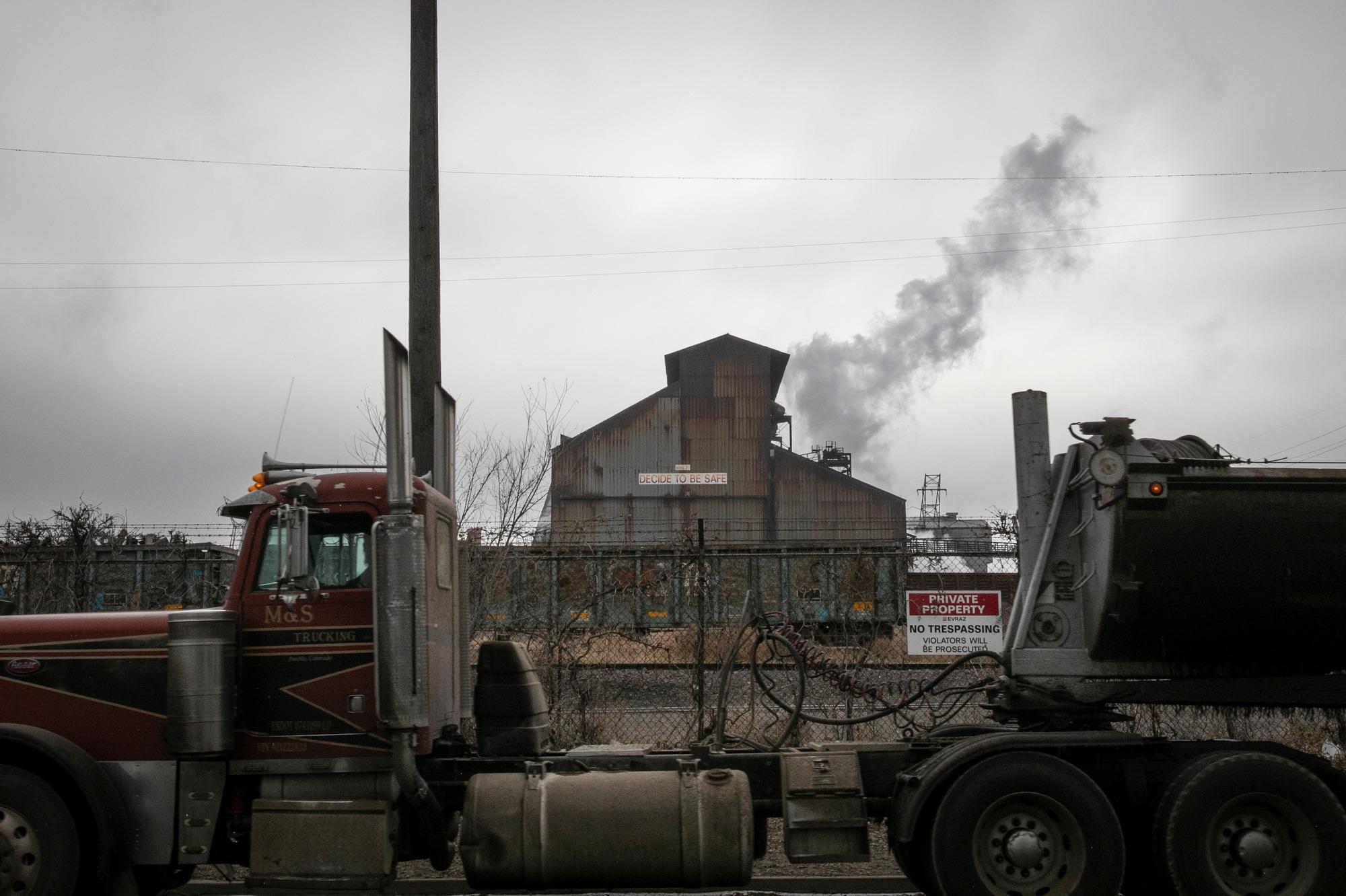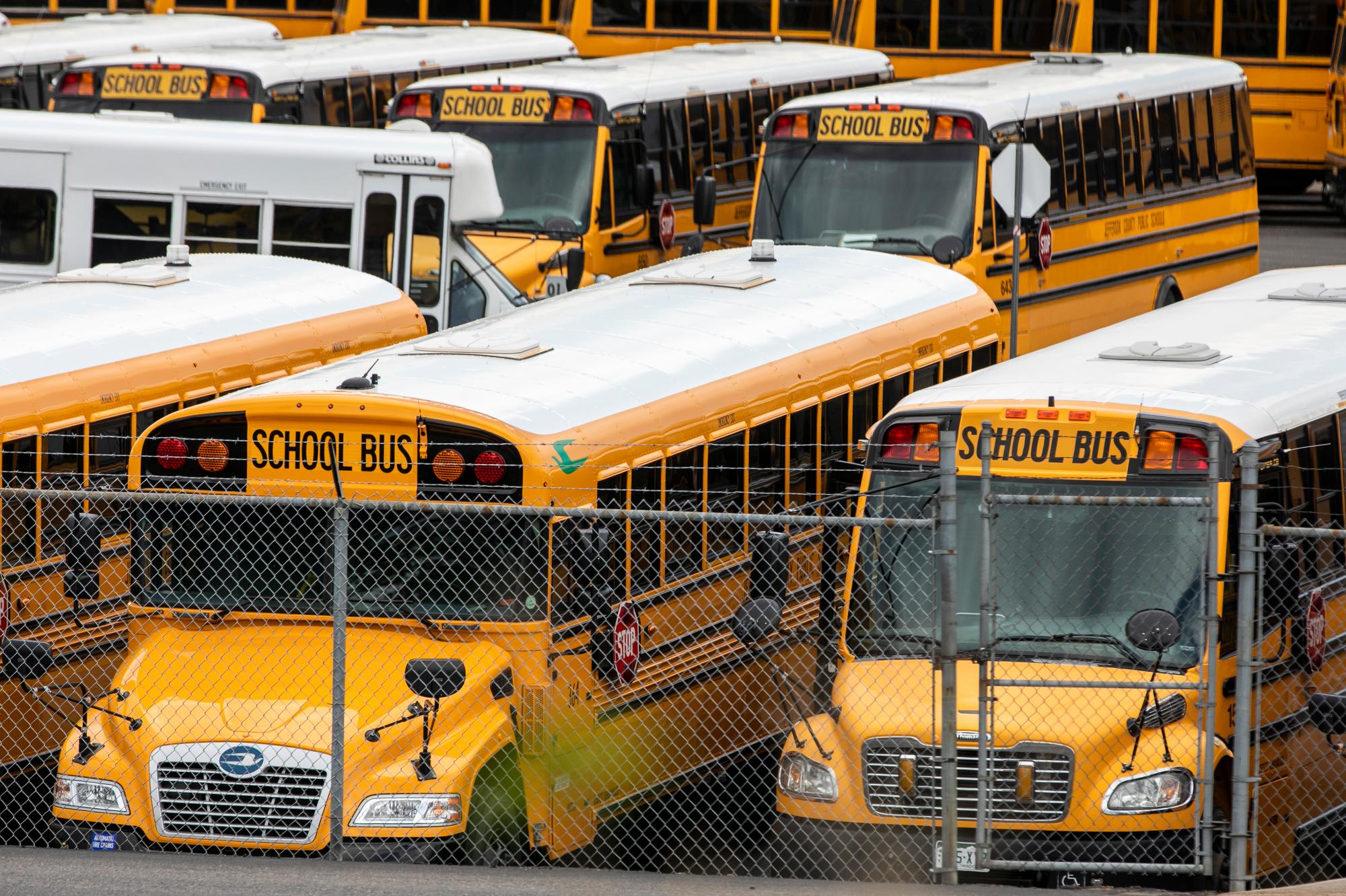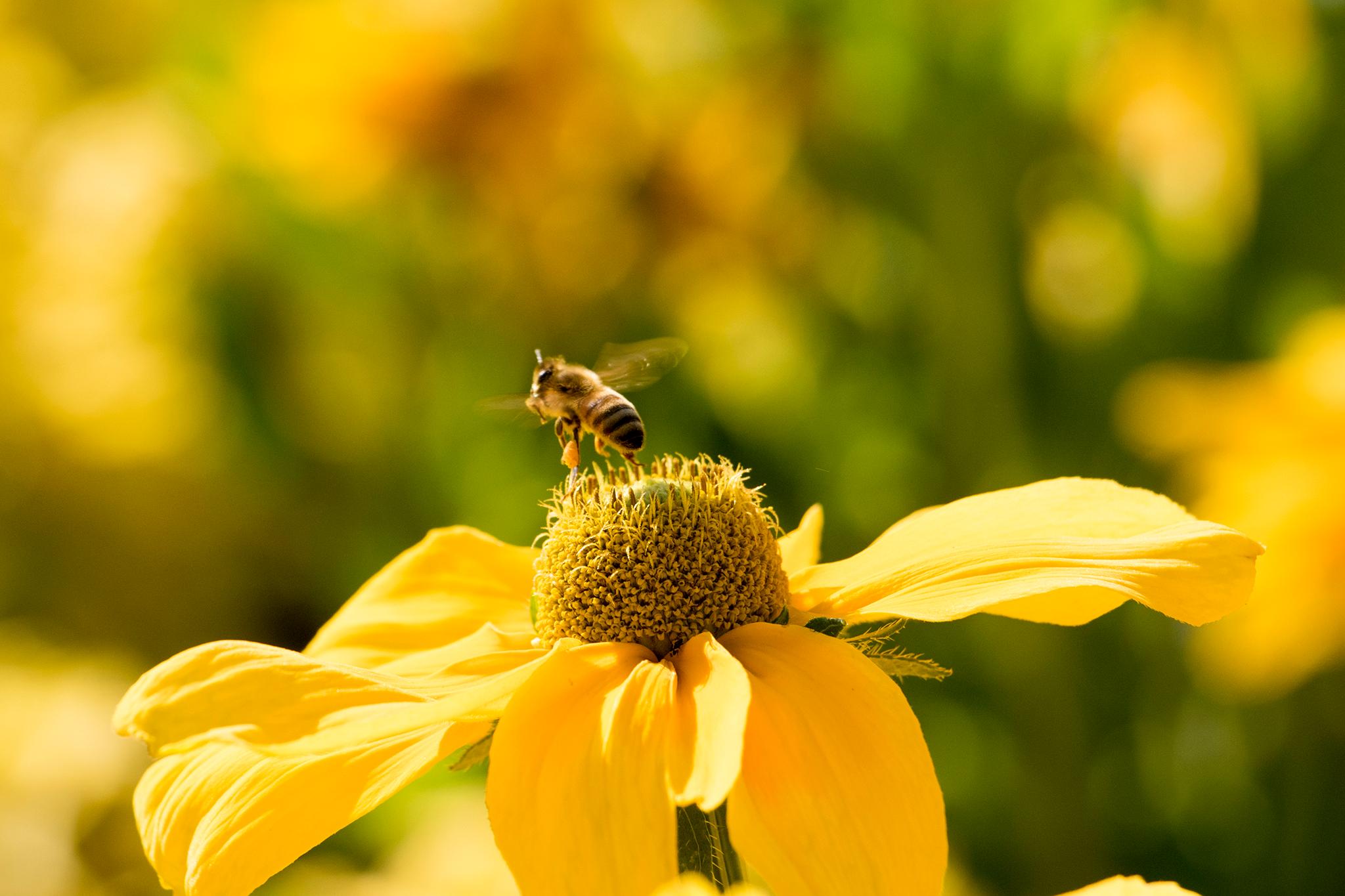
In the spring, Juan Gallegos, a fifth-generation Coloradan from Arvada, usually sees bees and butterflies zipping around his plants. But he hasn’t seen them this year.
“I'm talking with folks along the front range,” he said, “and none of us have really seen any pollinators. I'm kind of curious, what's going on.”
So Gallegos asked Colorado Wonders: Where are all the bees and butterflies?
Colorado Wonders is an ongoing project from Colorado Public Radio, where readers and listeners can ask questions they have about life in the state.
Gallegos’ question may seem like a simple one, but it carries local and global implications. More than a third of the world's food crops depend on bees, butterflies, and other pollinating critters like bats, birds, and flies. Here in Colorado we wouldn’t have Palisade peaches or Rocky Ford melons without them.
So what’s going on with these beneficial little animals? Why might Gallegos be seeing fewer of them buzzing or flitting around his Arvada home this year? Big surprise -- the answer is complex. It isn’t just ONE thing causing some pollinators to struggle right now.
Lisa Mason, an entomologist who runs the Native Bee Watch Community Science Program through Colorado State University extension in Arapahoe County, helps give the bigger picture.
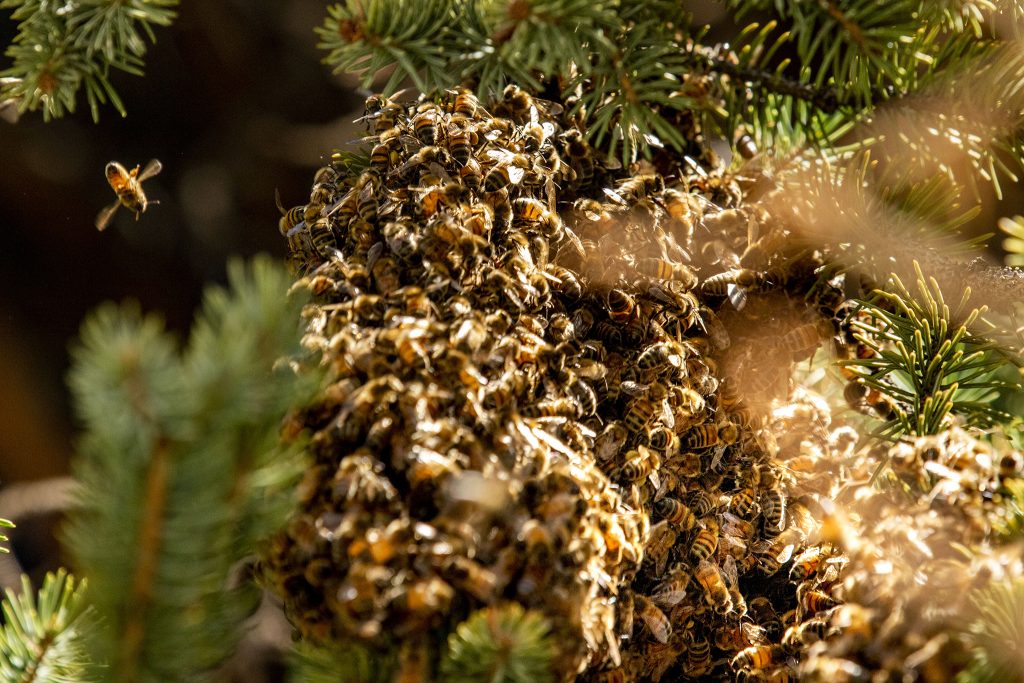
Mason said many pollinators are up against common challenges -- like habitat loss from human development, erratic weather patterns due to climate change, and the pervasiveness of chemicals and pesticides in the ecosystem.
But some of our very important pollinating creatures are up against unique challenges.
The mighty Varroa mite
The iconic honeybee for example, a non-native species, is originally from Europe. It makes honey, lives in giant social hives and gets deployed like miniature livestock to pollinate commercial agriculture crops across the country.
It also has a fearsome but tiny foe — the Varroa mite. That’s a parasitic insect that “can ultimately cause the death of the colony,” Mason said. The mites feed on the bees, weakening their immune systems, and introduce other harmful pathogens into the hives while they’re at it.
Each year, she said honeybee colony loss overall can vary from 30 percent to 60 percent … or higher. That’s a constant concern — especially for the agricultural industry. And Mason said it could certainly contribute to, say, a resident of Arvada, Colorado, seeing fewer bees around his plants this time of year.
It’s in the air. Weather could be impacting pollinators
Fluctuations in the weather can also dramatically impact insects and pollinator populations from year to year, Mason said. And with climate change, erratic weather patterns are likely here to stay for a while.
“We had a very wet spring this year,” she said, “especially along the Front Range in Colorado.” That could have delayed the emergence of pollinating insects.
Of course climate change is a complex issue and each species may react to the effects of climate change differently, Mason said.
Colorado is home to an incredible diversity of native bees — more than 900 species of them. Unlike the honeybee, which is a highly managed commercial species, “extinction is a possibility for some of these native bees,” she said.
The ones that might fare better as the climate and ecosystems shift, are the generalist bees, said Mason. “They visit a wide variety of flowers, so… they've got options,” Mason said. Whereas specialist bees have fewer adaptations on hand. “If climate change is impacting the flowers they visit, they might struggle more,” Mason said, or fizzle out altogether.
Climate change might also push certain pollinator species to different elevations where the flora is different.
Another scenario that Mason said is becoming more common, “is something called phenology mismatch. That's when, with climate change, flowers could be blooming earlier in the season than normal,” she explained. And the pollinators might snooze and miss it. They could go hungry as a result, and populations might decline.
No place to call home
Just like with other wildlife species, many pollinators are losing their habitat spaces to human development, according to Mason. This is true especially for native bees.
“Most people know that honey bees live in hives,” she explains, but “native bees live underground or in cavities like a dead log.” Those spaces are quick to get paved over, especially in urban areas.
But Mason said this is one puzzle piece of pollinator health that regular people can help to keep in place — especially if you have any bit of ground or garden. “You can be very artistic with how you design your garden,” she said, “but leave some bare areas without mulch. Native bees and potentially other beneficial insects can utilize it.”
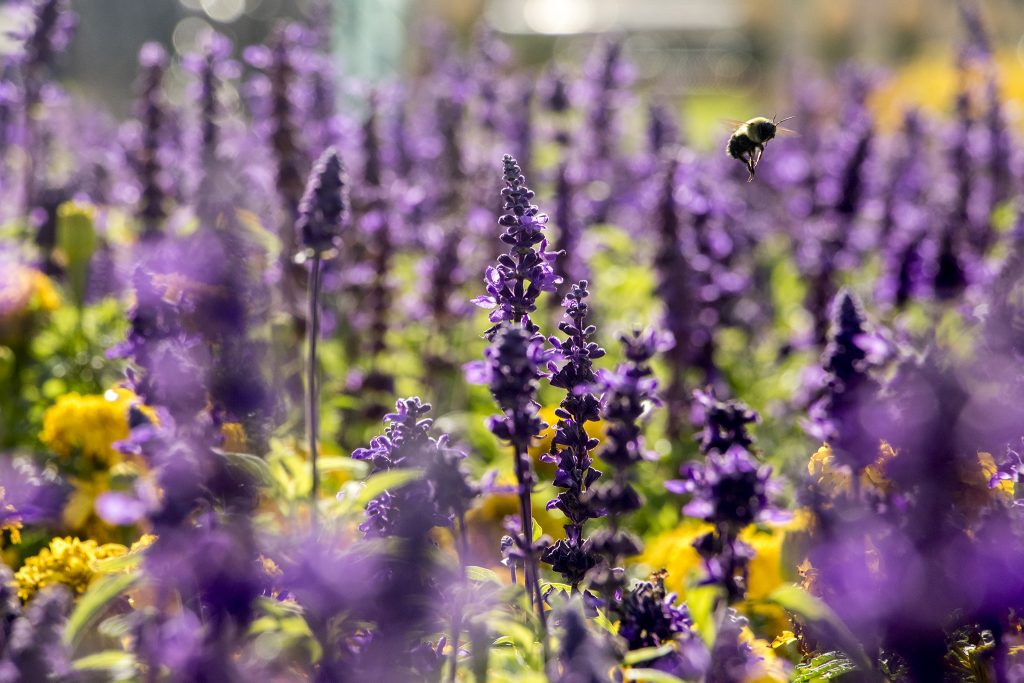
Planting flowers is another thing people can do to provide food sources for nearly all local pollinators. Even if you’re watching your water use. “A lot of xeriscape gardens have native Colorado plants,” Mason said. “And those go a long way for supporting our native bees. That's what they've always relied on.”
Another important thing to keep in mind is that chemical pesticides can be harmful to pollinators.
Enlisting citizen scientists
Mason said there’s a lot more we need to learn about pollinators and how they’re adapting and responding to the changes in the world around them. She’s specifically interested in gathering more data on the myriad of native bee species in our state.
That’s what the Native Bee Watch Community Science Program at CSU extension is all about. Mason helps train scores of volunteers across the state to go out in their own gardens or nearby natural environments where they observe and count native bees. Many of the volunteers are amateurs and are learning for the first time how to tell a bumblebee from a honey bee from a leafcutter bee.
“We're collecting long-term trend data,” said Mason, “but also we want to understand what flowers the bees prefer to visit.” That could inform gardeners who want bee friendly gardens or for “anyone who designs landscapes,” she said.
And in case anyone’s worried about getting stung in the line of scientific duty, Mason reassures them. “Over 90 percent of all insect stings are actually the Western yellow jackets,” she said. Not bees. “They're the insects that are flying around your picnics and your barbecues, they're scavengers, and are attracted to human food sources.”
Bees don’t want to sting you, she said. “They get a bad rap.”
Mason is still recruiting volunteers for the Community Science Program. You can find out more at nativebeewatch.org.

What are you curious about when it comes to life in Colorado, be it culture, government, people or the rest of the Centennial state? Help shape our reporting by telling us what matters to you.
_





